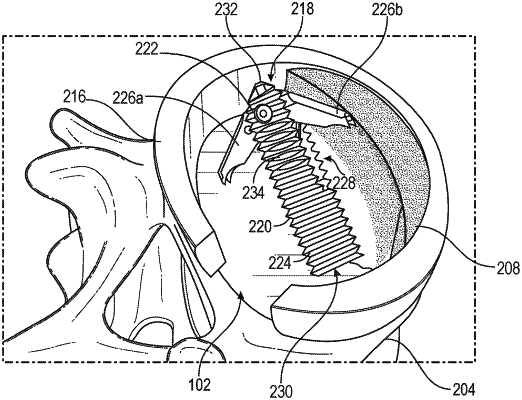| CPC A61B 17/70 (2013.01) [A61B 17/1757 (2013.01); A61F 2/4455 (2013.01); A61B 2017/0256 (2013.01)] | 20 Claims |

|
1. A method for a single incision anterior fusion and posterior fusion spinal procedure, the method comprising:
providing instructions for performing the single incision anterior fusion and posterior fusion spinal procedure, the instructions comprising:
make a minimally invasive incision on a patient to provide percutaneous lateral access to a spine of the patient;
advance a guidewire through the minimally invasive incision and into an intervertebral disc space located between a first vertebra and a second vertebra of the spine;
advance at least one dilator through the minimally invasive incision and over the guidewire to dilate the intervertebral disc space;
advance at least one sleeve through the minimally invasive incision and over the at least one dilator;
insert, via an anterior trajectory and through an access point defined by Kambin's triangle, an interbody cage into the intervertebral disc space,
wherein the interbody cage comprises a first wing and a second wing actuatable between an open configuration and a closed configuration,
wherein the first wing and the second wing extend laterally out of a window of the interbody cage in the open configuration such that the first wing and the second wing are substantially parallel to the first vertebra and the second vertebra when inserted, and
wherein the first wing and the second wing are within the window in the closed configuration;
deploy the first wing and the second wing to transition the interbody cage from the closed configuration to the open configuration;
reposition the guidewire to access a target space between the first vertebra and the second vertebra; and
insert, via a posterior trajectory, a spinal fusion implant through the minimally invasive incision and to the target space for stabilization at the target space.
|